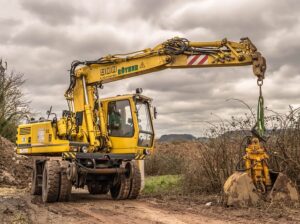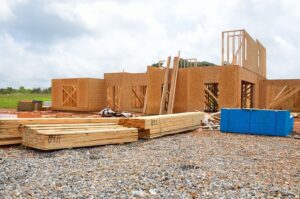
When selecting flashlights for construction workers, particularly for emergency situations during power outages, durability and reliability are paramount. The best flashlights feature a rugged build with materials like aluminum to withstand drops and impacts, and are equipped with LED technology for its long-lasting performance, energy efficiency, and resilience. A lumen output of at least 500 to 1000 is recommended for general tasks, with higher lumens available for darker environments. The flashlights should have safety features such as impact resistance, shatter-resistant lenses, and water resistance, given the potential exposure to tools and weather on a construction site. Practical features like a secure clip and user-friendly switch mechanisms enhance their usefulness. High-lumen options with adjustable intensity settings are crucial for visibility and safety in unpredictable conditions, ensuring that tasks can be performed safely and efficiently. LED flashlights for construction workers, with their longevity and energy efficiency, are a superior choice compared to traditional halogen lights, providing clear illumination without glare and reducing the need for frequent bulb replacements. Investing in high-quality, impact-resistant LED flashlights not only supports safety but also operational efficiency, making them an essential tool for construction workers in both planned operations and unexpected emergencies.
When darkness falls unexpectedly on a construction site, the immediate need for reliable illumination is paramount. This article delves into the critical role flashlights play during power outages, ensuring safety and efficiency for construction workers. We will explore key features that distinguish high-quality flashlights from ordinary ones, assess the importance of lumens in creating sufficient light output, and evaluate the impact of battery life and durability on their effectiveness in emergencies. Additionally, we’ll discuss the importance of impact resistance and waterproofing to protect these tools against environmental challenges. In a comparison of LED vs halogen lighting, we’ll highlight advanced technology options suitable for construction workers operating in low-light conditions. Finally, we’ll guide you through selecting the optimal flashlight for your construction team, addressing their unique needs and the demanding nature of their work environment.
- Understanding the Importance of Reliable Flashlights for Construction Workers During Power Outages
- Key Features to Look for in a High-Quality Flashlight for Construction Sites
- Evaluating Lumens and Light Output: Ensuring Adequate Illumination in Dark Conditions
- Battery Life and Durability: Critical Factors for Emergency Power Outages
- Impact Resistance and Waterproofing: Safeguarding Flashlights Against Environmental Hazards
- Advanced Technology: LED vs Halogen for Construction Work in the Dark
- Selecting the Best Flashlight for Construction Teams: A Comprehensive Guide
Understanding the Importance of Reliable Flashlights for Construction Workers During Power Outages
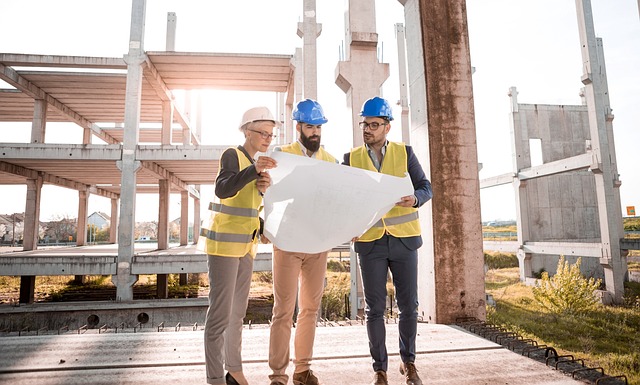
Construction workers rely heavily on reliable lighting sources to navigate, perform tasks, and ensure safety on-site, especially during power outages. In such instances, flashlights for construction workers become indispensable tools, offering immediate illumination in unpredictable conditions. The critical nature of this equipment cannot be overstated; it’s a matter of operational efficiency and personnel protection. A flashlight’s durability is paramount, as these professionals often work in environments exposed to the elements or under structures where electrical power may not be promptly restored. Flashlights for construction workers must withstand drops, impacts, and exposure to dust and water, complying with relevant safety standards. Their brightness capabilities should match the demands of the task at hand, ranging from a precise, focused beam for inspection work to a broader, diffused light in larger areas. LED technology is ideal due to its longevity, energy efficiency, and robustness. Ensuring that construction workers have access to high-quality flashlights is not just a safety measure; it’s an investment in the continuity of project timelines and the mitigation of risks associated with dark and potentially hazardous environments during power outages. Therefore, selecting the right flashlight involves considering factors such as lumen output, battery type and life, and the flashlight’s design and materials to guarantee performance and longevity under demanding construction site conditions.
Key Features to Look for in a High-Quality Flashlight for Construction Sites
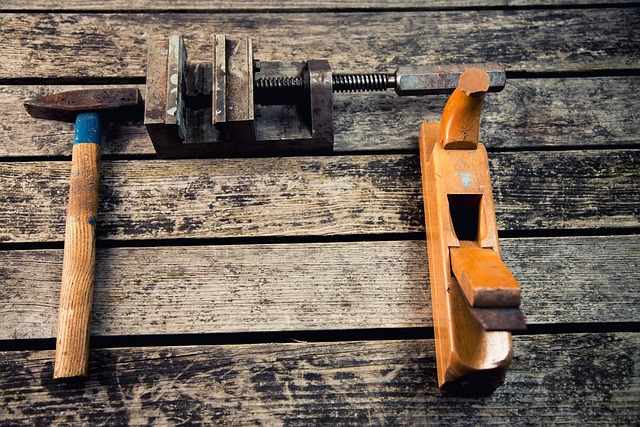
When selecting a flashlight tailored for construction workers, particularly for emergency power outages, durability and reliability are paramount. A high-quality flashlight designed for this purpose should be constructed with a robust housing typically made of aluminum or another hardy material to withstand the rigorous demands of a construction site. This ensures that it can endure accidental drops or being struck against tools and materials without breaking under pressure. The LED technology within should offer a balance between brightness and battery life, often ranging from 500 to 1000 lumens for general illumination tasks, with higher output options available for longer distances or when working in particularly dark environments.
Moreover, construction workers need a flashlight with a sturdy beam that can cut through the shadows in open areas or under the shelter of tarpaulins and sheds. A focusable beam is an advantageous feature, allowing users to adjust the intensity and spread of light according to their needs. Additionally, impact resistance and a shatter-resistant lens are crucial for safety, as these flashlights may be used in close proximity to other tools or in areas where they could fall from significant heights without immediate retrieval. Water resistance is also a key attribute, as construction sites often expose equipment to the elements, ensuring that the flashlight remains operational even during wet conditions. Features such as a clip for easy attachment to clothing or a belt loop, along with a secure twist or tail cap mechanism to activate and switch between modes, contribute to a flashlight’s practicality on a construction site. A flashlight for construction workers should be designed with both functionality and safety in mind, making it an indispensable tool during emergency power outages and regular operations alike.
Evaluating Lumens and Light Output: Ensuring Adequate Illumination in Dark Conditions

When selecting a flashlight intended for emergency power outages, particularly for construction workers who operate in low-light or completely dark environments during an outage, evaluating lumens and light output is paramount. Lumens measure the total amount of light a flashlight emits, not just how concentrated it is. A higher lumen value indicates a brighter light, which can illuminate large areas or distant objects effectively. Construction workers need a reliable source of light that can cut through darkness to safely navigate sites, inspect work, or perform repairs after a power outage. Therefore, it’s crucial to choose a flashlight with a high lumen output; at least 100 lumens for general tasks and significantly more for situations requiring long-range visibility. Additionally, consider the beam distance and type, as different situations may necessitate a floodlight or a spotlight beam. Flashlights for construction workers must be robust, durable, and provide consistent illumination to ensure they are an invaluable tool in emergency scenarios. Features such as adjustable intensity settings can enhance battery life by dimming the light when full brightness isn’t necessary, making them versatile for a variety of tasks. When evaluating flashlights for these purposes, prioritize those that offer both high lumens and a long beam distance to guarantee adequate illumination in unpredictable conditions.
Battery Life and Durability: Critical Factors for Emergency Power Outages

When the lights go out, a reliable flashlight becomes an indispensable tool, especially for construction workers who operate in environments where visibility is critical. In emergencies, battery life is paramount; a flashlight with a long-lasting battery ensures that workers can continue their tasks safely or navigate to safety if necessary. High-quality flashlights designed for construction workers often feature advanced LED technology, offering bright, focused light that can run for hours on end without fading. This durability is not solely about the battery, however; the flashlight itself must be robustly built to withstand the rigors of a construction site. It should be shock-resistant, dust-proof, and water-resistant to function reliably in various conditions. A durable flashlight with a long battery life can endure accidental drops, exposure to debris, and even temporary immersion in water without compromising performance. This resilience is critical as it guarantees that the flashlight remains operational when needed most, making it an essential component of a construction worker’s emergency kit. When selecting a flashlight for emergency power outages, prioritize models with a proven track record of longevity and brightness, ensuring that construction workers have a dependable light source in unpredictable situations.
Impact Resistance and Waterproofing: Safeguarding Flashlights Against Environmental Hazards
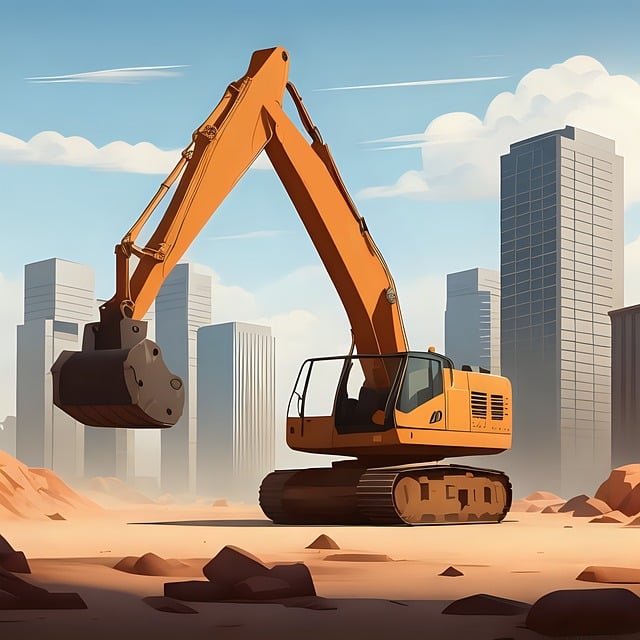
Flashlights are indispensable tools, especially for construction workers who operate in environments that can be both physically demanding and unpredictable. When selecting flashlights for construction sites, impact resistance and waterproofing are two critical features that ensure these lights continue to perform even when subjected to harsh conditions. Impact resistance is a measure of how well a flashlight can withstand drops, bumps, or throws without compromising its structural integrity or functionality. Construction workers often work in areas where tools and equipment are accidentally dropped, so a flashlight with an IP (Ingress Protection) rating of 67 or higher is ideal. This rating indicates that the flashlight can withstand limited dust ingress (6) and water immersion between 15 cm and 1 meter (7).
Waterproofing in flashlights for construction workers is equally vital, given the unpredictable nature of weather on job sites. A waterproof flashlight can operate underwater, which not only protects the internal components from damage but also allows the light to be used as a primary or secondary source of light in wet conditions. Additionally, some high-quality flashlights are built with an o-ring seal and a robust construction that prevents water from entering even when submerged. This ensures that the light remains operational, providing essential visibility for tasks ranging from masonry work to electrical wiring in environments where moisture could otherwise pose a risk to both the worker’s safety and the integrity of their work.
Advanced Technology: LED vs Halogen for Construction Work in the Dark
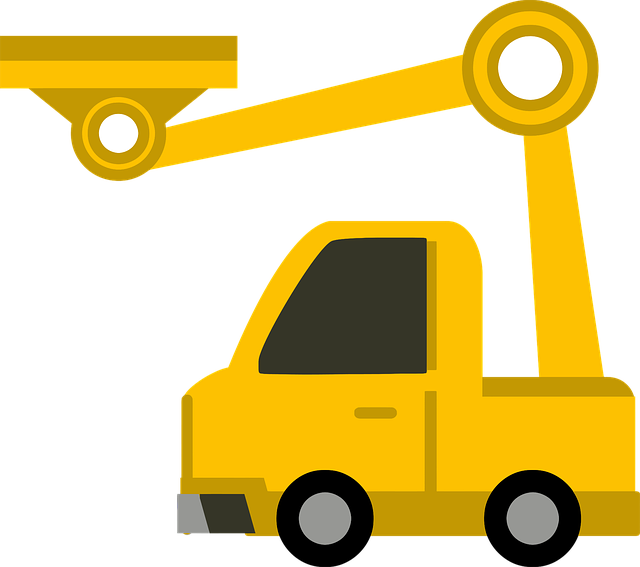
When construction sites operate after dusk, safety becomes paramount, and the choice of lighting is critical. In recent years, flashlights for construction workers have evolved significantly with the advent of advanced technologies in illumination. LED flashlights have emerged as a superior alternative to traditional halogen lights. LED (Light Emitting Diode) technology offers several advantages over halogen bulbs. Firstly, LED flashlights provide a longer lifespan, lasting up to 100,000 hours or more, which significantly reduces the frequency of bulb replacements and associated downtime on construction sites. Moreover, LED lights are far more energy-efficient, offering brighter light outputs that consume less power than halogen equivalents. This efficiency is particularly beneficial for construction workers who often need to operate in remote areas where power sources may be limited. The high-intensity focus of LED flashlights allows workers to clearly see their tasks at hand without the glare or delay in full brightness that halogen bulbs often exhibit upon activation. Additionally, the durability of LED lights means they can withstand the rigorous conditions encountered on a construction site, from drops and dust to exposure to different weather elements. Construction workers rely on flashlights for various tasks, including checking electrical circuits or navigating through dark spaces, making the reliability and performance of these devices critical. By choosing LED flashlights, construction teams can enhance safety, improve efficiency, and ensure that complex tasks can be completed effectively, even after sunset.
Selecting the Best Flashlight for Construction Teams: A Comprehensive Guide

When selecting a flashlight for construction workers, durability and reliability are paramount. A high-quality flashlight can be the difference between a safe work environment and a hazardous one. Construction sites are rife with potential dangers that can arise during day or night operations. Therefore, a flashlight designed specifically for construction workers should withstand the rigorous demands of a job site, offering robust performance under challenging conditions. Factors such as impact resistance, water resistance (IPX4 rating or higher is recommended), and a sturdy design are crucial to ensure the light source remains operational even when subjected to the harsh realities of a construction environment.
Moreover, for tasks that require both hands, a flashlight with a tail switch for easy operation is preferable. This feature allows workers to turn the light on or off without interrupting their work. Additionally, consider a flashlight with a high-lumen output and multiple modes—high, medium, and low settings can be beneficial for different lighting needs. A long battery life, especially in models with rechargeable batteries, is also essential, as construction work often extends beyond daylight hours. LED technology is highly recommended due to its longevity and energy efficiency compared to older incandescent bulbs. Lastly, a flashlight that can float or has a secure clip or strap is advantageous when used in areas with wet conditions or overhead tasks. By investing in a flashlight that meets these criteria, construction teams can ensure they have reliable lighting, contributing to their safety and the overall efficiency of the job site operations.
In conclusion, construction workers are at the forefront of navigating challenging environments, especially during unexpected power outages. The right flashlight can be a game-changer in such scenarios, offering not only safety and efficiency but also peace of mind. When selecting from among the many options for flashlights for construction workers, prioritize high lumens output, robust battery life, and superior durability to withstand harsh conditions. Opt for LED technology over halogen for its longevity and brightness. Ensure the chosen flashlight is impact resistant and waterproof to protect against environmental risks. By following this guide, construction teams can rest assured that they have a dependable light source ready to illuminate their work area safely and effectively during emergencies.
